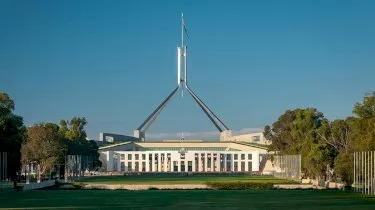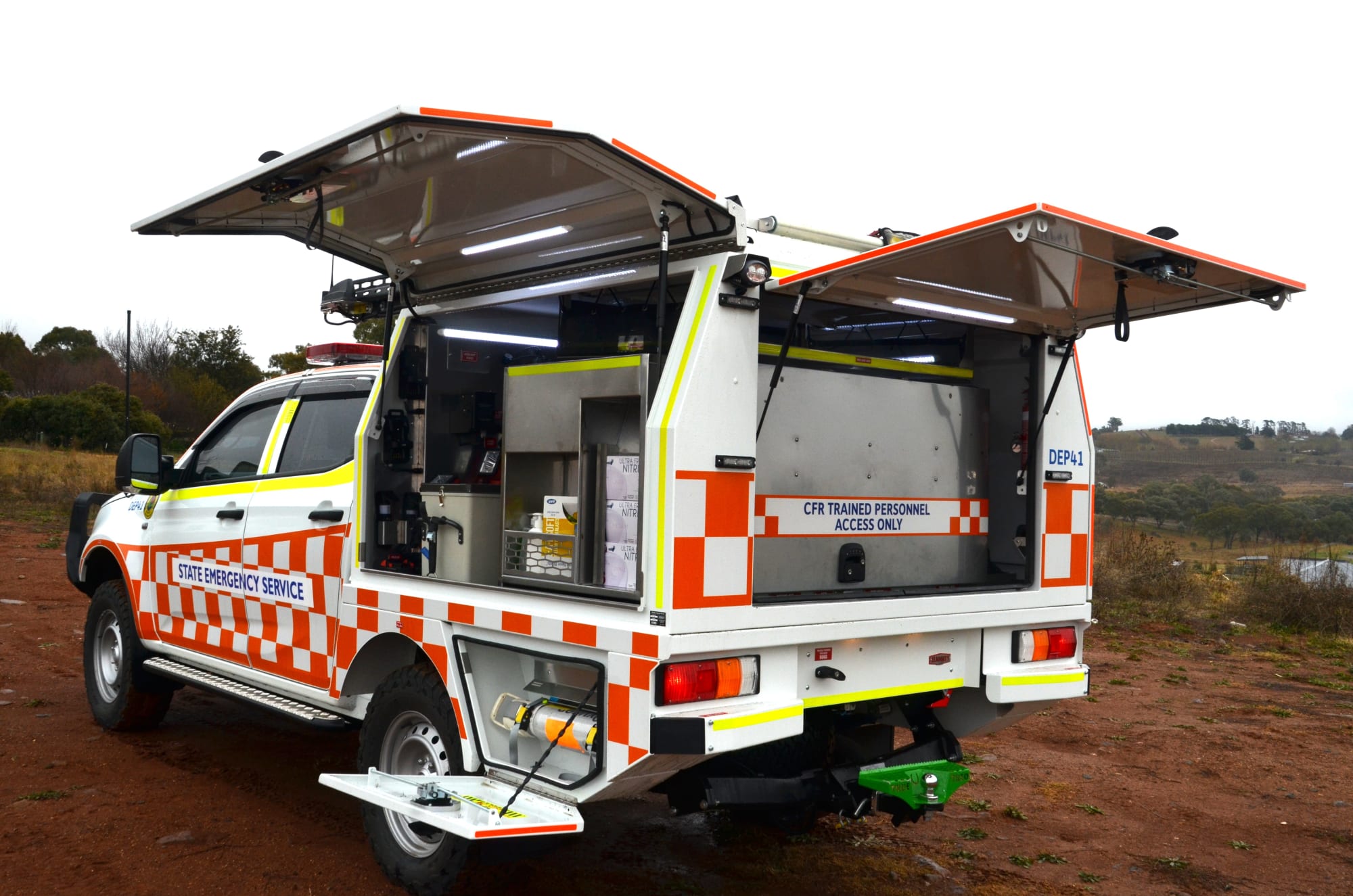Invest
Budget 2020 unveiled: The path out of the pandemic
Seven months overdue, the long-awaited federal budget has been delivered, setting out a much-anticipated plan for economic recovery post-COVID-19. Here’s what this might mean for you.
Budget 2020 unveiled: The path out of the pandemic
Seven months overdue, the long-awaited federal budget has been delivered, setting out a much-anticipated plan for economic recovery post-COVID-19. Here’s what this might mean for you.

“This budget is all about jobs,” proclaimed federal Treasurer Josh Frydenberg in the House of Representatives as he unveiled details of the 2020 federal budget.
“Tonight, we embark as a nation on the next stage of the journey.”
“There is no economic recovery without a jobs recovery. There is no budget recovery without a jobs recovery,” he said.
But such stimulus doesn’t come without a cost. The government is forecasting net debt will peak at $966 billion – or 44 per cent of gross domestic product (GDP) – by 2024.

Calling this debt “a heavy burden”, Mr Frydenberg said it is a necessary one – “to responsibly deal with the greatest challenge of our time”.
So, what does the budget have in store for everyday Australians?
Tax cuts and concessions
In a bid to kickstart the economy and increase consumer spending, the government said it will bring forward stage 2 of its Personal Income Tax Plan by two years.
From 1 July 2020 (backdated):
- The low-income tax offset will increase from $445 to $700,
- The top threshold of the 19 per cent tax bracket will increase from $37,000 to $45,000,
- The top threshold of the 32.5 per cent tax bracket will increase from $90,000 to $120,000.
Additional targeted support will also provide support to low- and middle-income Australians, who will receive a one-off additional benefit of up to $1,080.
More than 11 million Australians are expected to benefit from the tax cut, the Treasury has outlined, with more than 7 million individuals expected to receive $2,000 or more in tax relief for the 2020-21 income year, compared with previous years.
Pensioner payments
This budget includes two additional $250 payments for Australia’s pensioners. The first will be provided from December 2020, while the second will become available in early 2021.
Reforms to super
“The Morrison government is reforming the superannuation system so that it works harder for Australians,” it was reported.
“Too many Australians are paying too much in super fees,” Mr Frydenberg said, with superannuation fees costing Australians $30 billion per year – more than energy bills ($27 billion) and water bills ($12 billion).
According to the Treasurer, new measures will benefit Australians by $17.9 billion over the next 10 years, which, left unchecked, could see Australians paying $45 billion in superannuation fees by 2034.
From 1 July 2021, the Your Future, Your Super package will work to prevent the creation of unintended multiple superannuation accounts, make it easier to choose a better fund, hold funds to account for underperformance, and improve transparency and accountability.
Job creation
The Treasury has allocated $98 billion towards job creation: $25 billion in direct COVID-19 response measures and $74 billion in new measures to aid in creation.
“Under our plan, the economy is forecast to grow by 4-and-a-half per cent next calendar year and unemployment is expected to fall to 6-and-a-half per cent by the June quarter 2022,” Mr Frydenberg stated.
This will see almost half a million young Australians supported through a new JobMaker hiring credit and investment in skills and training.
At a cost of $4 billion, the JobMaker hiring credit will be payable for up to 12 months for each new job created by Australian businesses – and is available for any employer who hires eligible employees between the ages of 16 and 35.
The hiring credit will be paid quarterly in arrears at the rate of $200 per week for those aged between 16-29, and $100 per week for those aged between 30-35, with eligible employees required to work a minimum of 20 hours per week.
Skills and training for young people
A $1 billion JobTrainer Fund will create up to 340,000 free or low-cost training places for school leavers and jobseekers.
In addition, $1.2 billion will be used to create 100,000 new apprenticeship and traineeship positions – with a 50 per cent wage subsidy for businesses who employ them.
A further 50,000 new higher education short courses and 12,000 Commonwealth supported places for higher education will also be added in 2021.
More to come.
About the author

About the author


Economy
Navigating the inflation maze: How CFOs can outsmart economic hurdles in Australia
Fresh inflation data have cooled expectations of near-term rate cuts in Australia, intensifying pressure on margins, capital allocation and demand. Rather than wait for monetary relief that may not ...Read more

Economy
Inflation concerns rise as Australia's CPI climbs to 3.8% in October
Australia's latest Consumer Price Index (CPI) figures have sent ripples through the economy, with headline inflation accelerating to 3.8% year-on-year in October, up from 3.6% in September. The data, ...Read more

Economy
October CPI results pose challenges for RBA’s monetary policy stance
In a surprising turn of events, the October Consumer Price Index (CPI) data has raised eyebrows among economists and market strategists, revealing stronger-than-expected inflationary pressures in ...Read more

Economy
Global deal activity declines by 6% amid economic uncertainty, reports GlobalData
In a year characterised by economic turbulence and evolving market conditions, global deal activity has witnessed a notable downturn during the first ten months of 2025. According to GlobalData, a ...Read more

Economy
Australia’s softening labour market puts another RBA cut in play — here’s what business should do now
A four-year high in unemployment has revived expectations the Reserve Bank could deliver another rate cut as soon as November. With quarterly GDP growth running at 0.6 per cent and annual growth at ...Read more

Economy
Rising CPI reinforces RBA’s stance as rate cut expectations remain: State Street
State Street Global Advisors says the Reserve Bank of Australia (RBA) is likely to hold its current policy outlook following the release of September quarter inflation data, which showed an unexpected ...Read more

Economy
NSW SES boosts tsunami preparedness ahead of World Tsunami Awareness Day
As World Tsunami Awareness Day approaches on 5 November, the New South Wales State Emergency Service (NSW SES) is ramping up efforts to enhance tsunami preparedness along the east coastRead more

Economy
Lifesaving Regional Response Strengthened with New NSW SES Vehicles
In a significant boost to regional emergency services, the NSW State Emergency Service (SES) has unveiled 11 new Community First Response (CFR) vehicles, designed to enhance the speed and safety of ...Read more

Economy
Navigating the inflation maze: How CFOs can outsmart economic hurdles in Australia
Fresh inflation data have cooled expectations of near-term rate cuts in Australia, intensifying pressure on margins, capital allocation and demand. Rather than wait for monetary relief that may not ...Read more

Economy
Inflation concerns rise as Australia's CPI climbs to 3.8% in October
Australia's latest Consumer Price Index (CPI) figures have sent ripples through the economy, with headline inflation accelerating to 3.8% year-on-year in October, up from 3.6% in September. The data, ...Read more

Economy
October CPI results pose challenges for RBA’s monetary policy stance
In a surprising turn of events, the October Consumer Price Index (CPI) data has raised eyebrows among economists and market strategists, revealing stronger-than-expected inflationary pressures in ...Read more

Economy
Global deal activity declines by 6% amid economic uncertainty, reports GlobalData
In a year characterised by economic turbulence and evolving market conditions, global deal activity has witnessed a notable downturn during the first ten months of 2025. According to GlobalData, a ...Read more

Economy
Australia’s softening labour market puts another RBA cut in play — here’s what business should do now
A four-year high in unemployment has revived expectations the Reserve Bank could deliver another rate cut as soon as November. With quarterly GDP growth running at 0.6 per cent and annual growth at ...Read more

Economy
Rising CPI reinforces RBA’s stance as rate cut expectations remain: State Street
State Street Global Advisors says the Reserve Bank of Australia (RBA) is likely to hold its current policy outlook following the release of September quarter inflation data, which showed an unexpected ...Read more

Economy
NSW SES boosts tsunami preparedness ahead of World Tsunami Awareness Day
As World Tsunami Awareness Day approaches on 5 November, the New South Wales State Emergency Service (NSW SES) is ramping up efforts to enhance tsunami preparedness along the east coastRead more

Economy
Lifesaving Regional Response Strengthened with New NSW SES Vehicles
In a significant boost to regional emergency services, the NSW State Emergency Service (SES) has unveiled 11 new Community First Response (CFR) vehicles, designed to enhance the speed and safety of ...Read more








